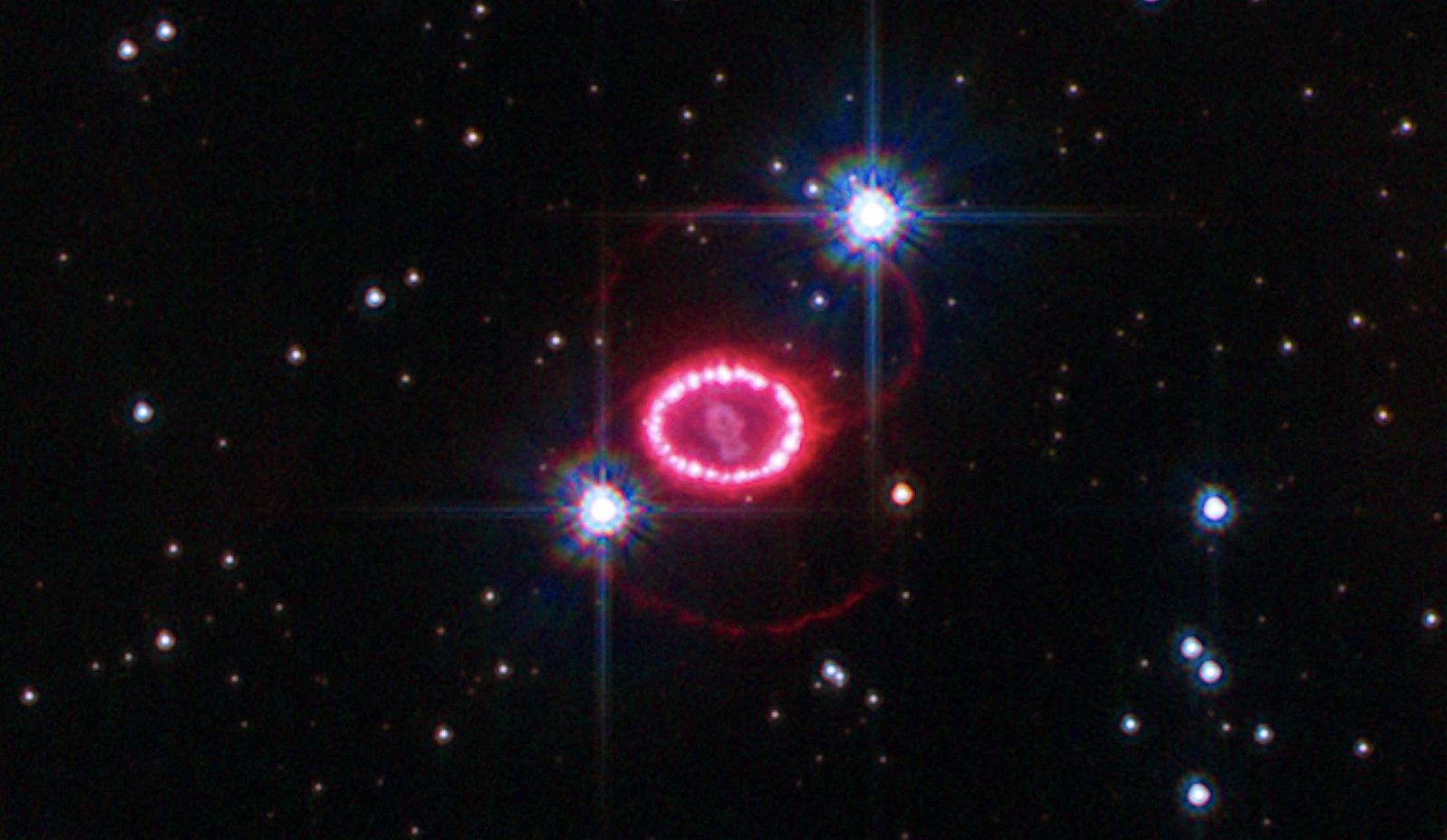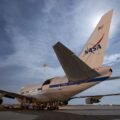Researchers may now be closer to understanding the secret interactions that occur between neutrinos when stars explode, according to new research into the behavior of the mysterious subatomic particles.
Each day, millions of neutrinos pass through the bodies of every living creature on Earth. Among the most common particles in the universe, physicists often refer to them as “ghost particles,” since neutrinos barely interact with other forms of matter. Of all the known subatomic particles possessing mass, neutrinos are also the lightest, possibly even possessing no mass at all.
While much about them remains mysterious, we do know that neutrinos arise from some of the most violent astrophysical events in the known universe—namely the gamma-ray bursts that occur during distant stellar explosions. However, neutrinos are also produced here on Earth within nuclear reactors, since they are generated every time atomic nuclei come together.
Astrophysicists know that neutrinos play an important role in the formation of stars and galaxies throughout the universe and also were formative in the creation of basic elements throughout the universe that were produced at the time of its conception: the Big Bang. Yet while these ghostly particles outnumber all other known particles in the universe by a significant degree, they continue to present significant challenges to scientists hoping to detect and study them.
Fortunately, a new study that appeared on August 15 in Physical Review Letters could provide new clues to the nature of the universe’s most mysterious particles, by helping to establish an entirely new framework for how the massive explosions that occur during the death of collapsing stars—events which astronomers call supernovae—can help reveal the self-interactions that occur between neutrinos, giving rise to significant changes throughout the universe.
Researchers at Ohio State University (OSU) report that they were able to calculate the ways that self-interactions would affect the neutrino signal associated with the nearest supernova to Earth that has been detected in the telescopic age.
Although it is the brightest supernova seen from our planet in modern times, Supernova 1987A actually occurred 160,000 years ago, close to 10,0000 prior to the dispersal of Homo sapiens throughout Africa. Occurring within the Large Magellanic Cloud, a dwarf galaxy in the Milky Way, it was first discovered in early 1987, and was observed for several months thereafter as it produced light comparable to the power of 100 million of our own suns.
The Hydrodynamics of Ghost Particle Self-Interactions
Hydrodynamics—the study of fluid motion and the forces on bodies immersed in fluids—is the branch of physics under which several fundamental laws that govern the conservation of mass, momentum, and energy, are all found.
It is also relevant to the study of neutrinos, since based on calculations made by the OSU team that examined how the neutrino signal detectable from SN 1987A would be affected by self-interactions between the particles, they were able to discern that they form “a tightly coupled fluid that expands under relativistic hydrodynamics,” according to a new paper describing their work.
There are two differing theories that the OSU researchers are concerned with when it comes to neutrinos. The first one, involving what is known as “burst outflow” theory, envisions a neutrino fluid that moves outward in all directions following a burst. The alternative, known as a “wind outflow,” involves neutrinos escaping at a constant flow rate more like a steady jet of wind.
Po-Wen Chang, a graduate research assistant with OSU’s Center for Cosmology and Astroparticle Physics, says that although the wind-outflow theory is the theory that represents a more probable occurrence in nature, the possibility that neutrino “burst outflows” may occur could be significant since it would allow researchers the ability to observe unique neutrino signatures being emitted by supernovas like SN 1987A.
Of primary significance in the studies of neutrino behavior is the fact that if scientists are able to determine they act as a fluid, this would indicate that they act as a collective, potentially indicating that these ghostly particles may behave differently when acting as a collective than they would when acting individually. Therefore, the physics of supernovae could also undergo changes as well.
“The dynamics of supernovae are complicated, but this result is promising because with relativistic hydrodynamics we know there’s a fork in the road in understanding how they work now,” Chang said in a statement.
Settling a Decades-Old Debate
Underscoring the complex dynamics of supernovae is the more than 35-year-old running debate over how neutrinos are scattered when they become ejected from a supernova. Chang and the coauthors of a new paper describing their work argue that if neutrino burst outflows are occurring, even the limited data researchers currently possess about SN 1987A would allow a remarkable degree of sensitivity in terms of neutrino self-interactions.
“Even though we were not able to completely solve how neutrinos affect supernovae, what we’re excited about is that we were able to make a substantial step forward,” said John F. Beacom, a Distinguished Professor of Physics and Astronomy at OSU and co-author of the new paper.
Another fundamental question the research team has on their mind about supernovae is when the next one will occur, which could be decades away, meaning that astrophysicists may have to wait before they are able to make additional observations that could help broaden our understanding of the strange dynamics of these catastrophic stellar explosions.
“We’re always praying for another galactic supernova to happen somewhere and soon,” Chang said in a statement, adding that “the best we can do is try to build on what we know as much as possible before it happens.”
Chang and the team’s paper, “Toward Powerful Probes of Neutrino Self-Interactions in Supernovae,” was published in Physical Review Letters on August 15, 2023.
Micah Hanks is the Editor-in-Chief and Co-Founder of The Debrief. He can be reached by email at micah@thedebrief.org. Follow his work at micahhanks.com and on Twitter: @MicahHanks.

